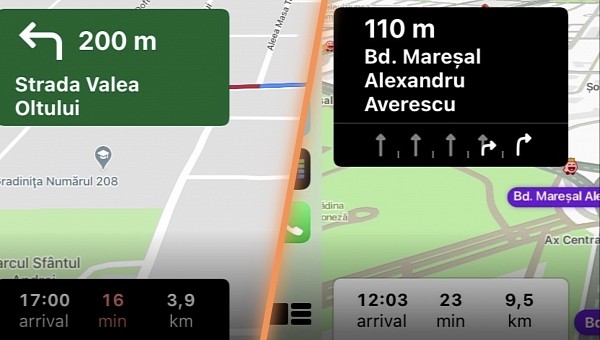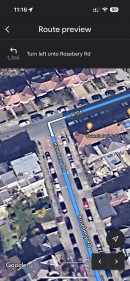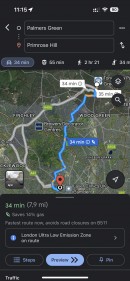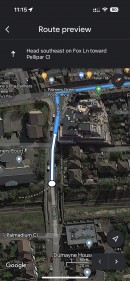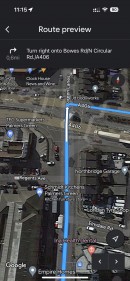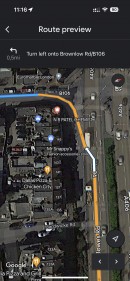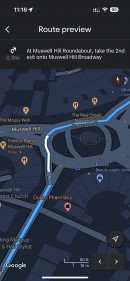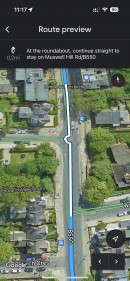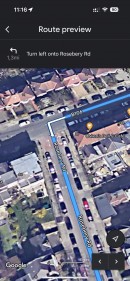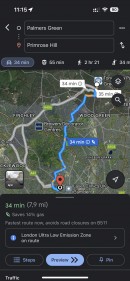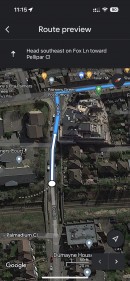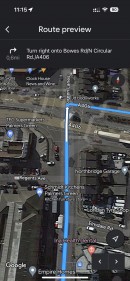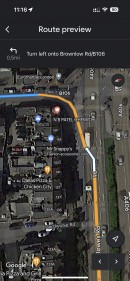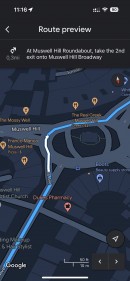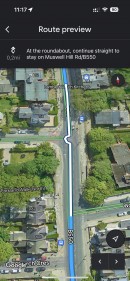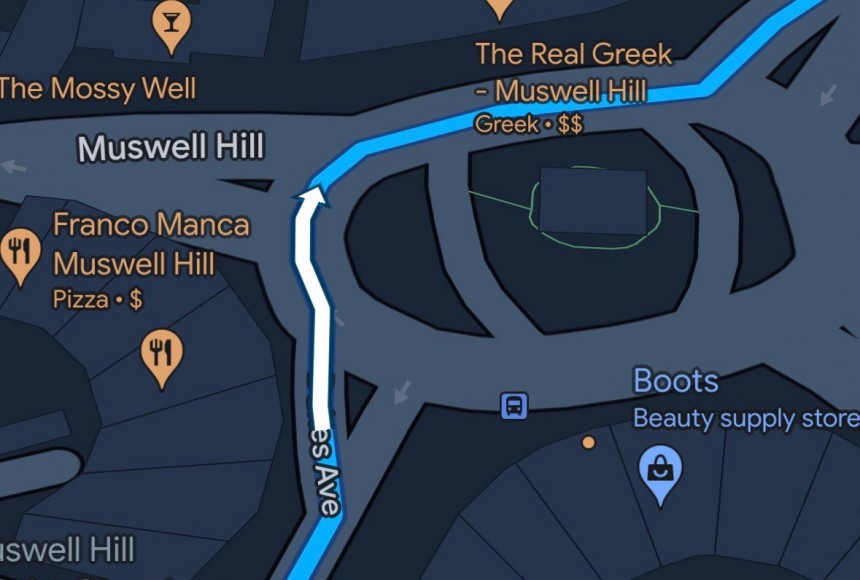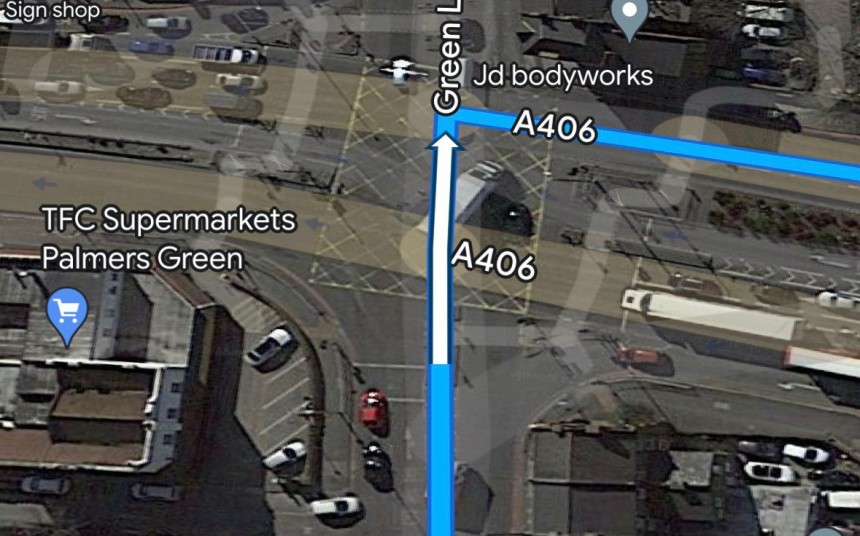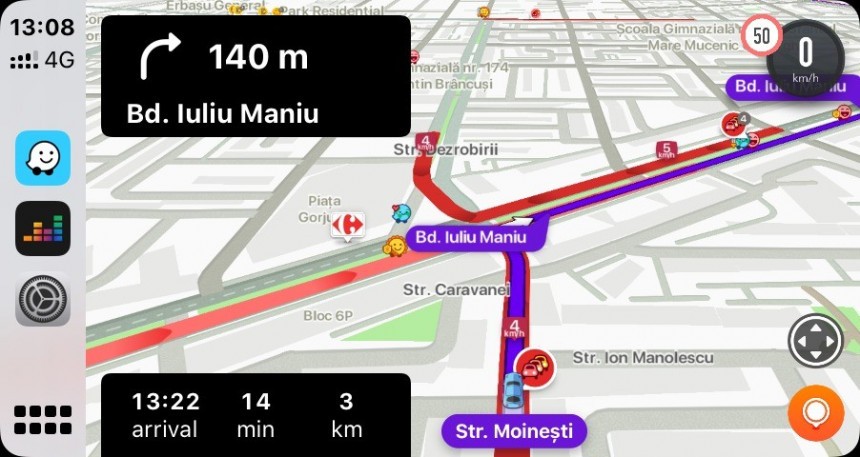Google and Waze might look like two drops of water for many users, as both are trying to take users from where they are to where they want to be. To do this, they typically search for the fastest route, taking into account data like traffic jams, construction zones, and road closures.
Despite this, each app expanded on different fronts.
Google Maps is trying to be an all-in-one solution, with navigation just a small part of its offering. It now allows users to explore the world from their mobile devices and provides street-level imagery to help in this regard.
Waze is entirely focused on navigation and traffic. The crowdsourcing engine that powers the application allows drivers to send traffic reports and let others know what’s happening on the road. They can flag speed traps, roadkill, traffic jams, accidents, and various other hazards.
Based on this information, Waze can then look for the fastest route to a destination. Google Maps sometimes imports data from Waze as well, including accidents and speed traps.
Google Maps and Waze require an Internet connection to provide all capabilities, such as traffic conditions. When it comes to using them in offline mode, the two apps come with different approaches.
Google Maps is fitted with offline maps, so the application can still determine your location and provide route guidance to the destination. The offline maps can be downloaded from the app’s settings menu.
They allow users to continue navigating without an Internet connection, making it possible to search for new destinations just like it’d be online. Certain features are missing though, including traffic information, alternate routes, and lane guidance. All of them require an active Internet connection to download data.
Furthermore, once Google Maps goes offline, transit, bicycling, and walking directions are no longer available.
Google Maps can provide navigation to a certain address as long as the entire route is within the offline maps. This is why you need to make sure you download offline maps covering a region that’s as large as possible. The region selection process isn’t exactly the best, as Google Maps does not allow users to download offline maps for a whole city or country.
Instead, it requires them to select a region from the map, and more often than not, this is smaller than an entire country.
Google Maps can automatically update the offline maps when the app is running.
Waze can send traffic information to a central server without users doing anything special on their devices. Once the app is launched, even without active navigation, it collects information such as the vehicle speed and sends it to the parent company. This way, Waze can determine where traffic jams are more likely to happen, eventually being able to generate faster routes.
Using Waze without an Internet connection is still possible with a small catch.
If you’re already offline and try to set up Waze to a certain destination, the application should normally return an error. This is because Waze does not come with an offline mode or offline maps.
To use it offline, setting up the navigation must happen when an Internet connection is available. Launch Waze while your mobile device is still online (either using Wi-Fi or with a data plan), configure the destination, wait for Waze to generate a route, and that’s it. You can now disconnect from the Internet, and Waze will still guide you to the destination.
Waze can’t download updated data, so traffic reports or warnings will be disabled. Furthermore, you need to follow the recommended route because otherwise, Waze won’t be able to look for alternative ways to reach your destination.
It goes without saying this isn’t the most convenient way to use Waze, but it’s the only option to keep running the application when an Internet connection is not available. Thanks to the GPS connection, it’ll still follow you on the map. Without traffic reports and alternate routes, however, Waze is just a regular basic navigation app that only offers turn-by-turn navigation.
Needless to say, if you can still go online from time to time, Waze can automatically refresh the navigation and download new data, eventually providing more accurate navigation and even faster routes to the destination. You can use public hotspots, typically found at restaurants or even in parking lots, or your phone’s data plan to download updated navigation data in Waze.
Google Maps is trying to be an all-in-one solution, with navigation just a small part of its offering. It now allows users to explore the world from their mobile devices and provides street-level imagery to help in this regard.
Waze is entirely focused on navigation and traffic. The crowdsourcing engine that powers the application allows drivers to send traffic reports and let others know what’s happening on the road. They can flag speed traps, roadkill, traffic jams, accidents, and various other hazards.
Based on this information, Waze can then look for the fastest route to a destination. Google Maps sometimes imports data from Waze as well, including accidents and speed traps.
Google Maps and Waze require an Internet connection to provide all capabilities, such as traffic conditions. When it comes to using them in offline mode, the two apps come with different approaches.
Google Maps offline mode
The application was specifically developed with dedicated features to allow the use of navigation without an Internet connection.Google Maps is fitted with offline maps, so the application can still determine your location and provide route guidance to the destination. The offline maps can be downloaded from the app’s settings menu.
They allow users to continue navigating without an Internet connection, making it possible to search for new destinations just like it’d be online. Certain features are missing though, including traffic information, alternate routes, and lane guidance. All of them require an active Internet connection to download data.
Furthermore, once Google Maps goes offline, transit, bicycling, and walking directions are no longer available.
Instead, it requires them to select a region from the map, and more often than not, this is smaller than an entire country.
Google Maps can automatically update the offline maps when the app is running.
Waze offline mode
Compared to Google Maps, Waze can do its magic as long as an Internet connection is available. This makes perfect sense, as the crowdsourcing engine needs the app to be online. Otherwise, it can’t send and receive traffic reports that are eventually used for generating routes to a certain destination.Waze can send traffic information to a central server without users doing anything special on their devices. Once the app is launched, even without active navigation, it collects information such as the vehicle speed and sends it to the parent company. This way, Waze can determine where traffic jams are more likely to happen, eventually being able to generate faster routes.
Using Waze without an Internet connection is still possible with a small catch.
To use it offline, setting up the navigation must happen when an Internet connection is available. Launch Waze while your mobile device is still online (either using Wi-Fi or with a data plan), configure the destination, wait for Waze to generate a route, and that’s it. You can now disconnect from the Internet, and Waze will still guide you to the destination.
Waze can’t download updated data, so traffic reports or warnings will be disabled. Furthermore, you need to follow the recommended route because otherwise, Waze won’t be able to look for alternative ways to reach your destination.
It goes without saying this isn’t the most convenient way to use Waze, but it’s the only option to keep running the application when an Internet connection is not available. Thanks to the GPS connection, it’ll still follow you on the map. Without traffic reports and alternate routes, however, Waze is just a regular basic navigation app that only offers turn-by-turn navigation.
Needless to say, if you can still go online from time to time, Waze can automatically refresh the navigation and download new data, eventually providing more accurate navigation and even faster routes to the destination. You can use public hotspots, typically found at restaurants or even in parking lots, or your phone’s data plan to download updated navigation data in Waze.
